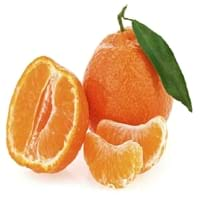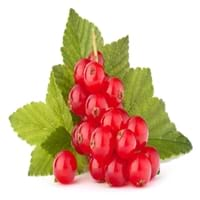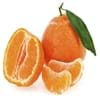Health Benefits
Cancer prevention, Heart care, Increases metabolic rate, Reduces stress
Cancer prevention, Gout treatment, Heart care, Regulation of heart rate, Treatment of rheumatism
General Benefits
Boosts immune system, Controls blood pressure, Digestive aid, Eye care, Helps in weight loss
Anti oxidant properties, Controls blood pressure, Cures fever, Digestive aid, Healing of wounds, Helps in weight loss, Strengthens bones
Skin Benefits
Brightens and lightens complexion, Treatment of acne, Treatment of dark spots
Brightens and lightens complexion, Reduces wrinkles, Treatment of acne
Hair Benefits
Promotes longer and healthier hair, Protects hair
Protects hair
Allergy Symptoms
Abdominal pains, Breathing difficulty, Coughing, Diarrhea, Drop in blood pressure, Fainting, Runny nose, Skin rash, Sneezing, Swelling of mouth, tongue or lips, Vomiting
Abnormally rapid heart rate, Anaphylaxis, Breathing difficulty, Hives, Itching, Swallowing difficulties
Side Effects
Allergic reaction
Possibly unsafe during pregnancy
Best Time to Eat
As a snack in the late afternoon, Don't consume at night and before bed, Eat the fresh ones, avoid mixing with any other foods, don't eat after meal., Morning time (before lunch)
Best if taken as a breakfast (or empty stomach), As a snack in the late afternoon, Don't eat after meal, Morning time (before lunch)
Vitamin A (Retinol)
Not Available
Vitamin B5 (Pantothenic Acid)
Vitamin C (Ascorbic Acid)
Vitamin K (Phyllochinone)
Lutein+Zeaxanthin
Not Available
Calories in Fresh Fruit with Peel
Not Available
Calories in Fresh Fruit without Peel
Not Available
Calories in Frozen Form
Not Available
Not Available
Calories in Dried Form
Not Available
Calories in Canned Form
Not Available
Not Available
Varieties
Clemenules or Nules and Nadorcott
Rovada, Stanza, Red Lake, Junifer and Jonkheer van Tets
Taste
Sweet, Tangy, Tart
Sour, Tart
Soil Type
Loam, Sandy, Well-drained
Moist, Well-drained
Climatic Conditions
Warm to hot climate
Cold
Facts about
- Clementine was first grown at the citrus research center in USA in 1909.
- It is called as"Christmas orange" as it's limited growing season falls during winter.
- It's a hybrid between Mediterranean and Oranges.
- The albino version of red currants known as white currants, are often sold as different fruit.
- Red currant tea is healthy substitute for coffee.
- There are more than 150 varieties of red currants.
Top Producer
Spain
Russia
Other Countries
Argentina, Brazil, Egypt, Italy, Japan, Morocco, Turkey, United States of America
Belgium, France, Germany, Ireland, Italy, Netherlands, Poland, Portugal, Scotland, Spain, Sweden, United Kingdom
Top Importer
United States of America
Germany
Top Exporter
Spain
Russia
Botanical Name
Citrus clementina
Ribes rubrum
Synonym
Not Available
Not Available
Subkingdom
Tracheobionta
Tracheobionta
Division
Magnoliophyta
Magnoliophyta
Class
Magnoliopsida
Magnoliopsida
Order
Sapindales
Saxifragales
Family
Rutaceae
Grossulariaceae
Species
C. clementina
R. rubrum
Generic Group
Citrus fruit
Saxifrage
Difference Between Clementine and Red Currant
We might think that Clementine and Red Currant are similar with respect to nutritional value and health benefits. But the nutrient content of both fruits is different. Clementine and Red Currant Facts such as their taste, shape, color, and size are also distinct. The difference between Clementine and Red Currant is explained here.
The amount of calories in 100 gm of fresh Clementine and Red Currant with peel is Not Available and 56.00 kcal and the amount of calories without peel is 47.00 kcal and Not Available respectively. Thus, Clementine and Red Currant belong to Low Calorie Fruits and Low Calorie Fruits category.These fruits might or might not differ with respect to their scientific classification. The order of Clementine and Red Currant is Sapindales and Saxifragales respectively. Clementine belongs to Rutaceae family and Red Currant belongs to Grossulariaceae family. Clementine belongs to Citrus genus of C. clementina species and Red Currant belongs to Ribes genus of R. rubrum species. Beings plants, both fruits belong to Plantae Kingdom.









